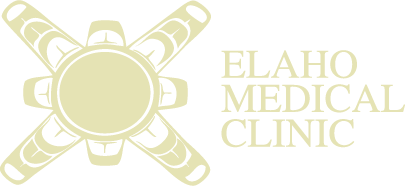Pregnancy and Acupuncture
by Mina Kavia
Uses of acupuncture during pregnancy, childbirth and postnatal recovery.
In the western world, acupuncture is becoming increasingly popular for promoting maternal and foetal well-being and for treating problems which may arise during pregnancy. It is a drug-free treatment alternative during a period of significant hormonal change. Traditional Chinese medicine has made use of acupuncture as a pregnancy treatment for 3000 years. Acupuncture is a safe and effective way to treat pre- and post natal conditions such as nausea, hemmorhoids, fatigue, carpal tunnel syndrome and thrush, as well as stimulating induction and providing pain relief.
Nausea and vomiting:
Can often occur during pregnancy due to hormonal changes (HCG, oestrogen), fatigue, stress and other emotional factors. 50-80% of women do not report this as a symptom and consider it a normal part of pregnancy. Acupuncture has been shown to be effective in reducing signs of nausea/vomiting(1) and dry wretching during early pregnancy(2). It is effective at reducing both the severity and incidence of nausea. Acupuncture can be used as a treatment method for nausea anytime during pregnancy.
Musculoskeletal Pain:
Research studies have revealed that acupuncture is the treatment of choice for pubic symphysis and sacroiliac pain during pregnancy.(3) Acupuncture is also effective for conditions such as back, neck and rib pain and carpal tunnel syndrome commonly experienced during pregnancy.
Breech and Posterior Presentation:
Moxibustion, a warming herb that may be applied over acupoints has been shown to be significantly effective in turning babies(4). Women with breech presentation have been offered moxibustion from 33 weeks onwards. This recommendation comes from the New Zealand Guidelines for Evidence Based Practice for the Care of Women(5). The treatment is ideally applied during 34-35 weeks to late pregnancy, or until the baby has turned. This applies to breech and other suboptimal pre-delivery positions.
Labour Preparation:
Acupuncture treatments are scheduled weekly, four to six weeks prior to birth to help prepare the pelvis and cervix for delivery. Studies show that acupuncture treatments result in reduced time during the active stage of labour(6) and a reduction in the need for medical induction and Caesarean section(7).
Induction:
If the baby is overdue, acupuncture is a gentle and effective alternative to medical induction.(8) Acupuncture is also helpful 2-3 days prior to medical induction.
Pain Relief in Labour:
Acupuncture and acupressure are effective drug free pain management strategies during labour. Acupressure points can be taught by your practitioner to your partner and/or support people. A review of 20 studies showed acupuncture to be a safe and acceptable technique for reducing labour pain and the duration of the active phase of labour.(9) For further information on how acupuncture can assist you during pregnancy and labour, please contact Mina Kavia, Registered Acupuncturist and Physiotherapist at 604 892 5688 - Squamish, BC.
References
1.Smith C, Crowther C, Beilby J. (2002) "Acupuncture to treat nausea and vomiting in early pregnancy: a randomized trial" Birth. 29(1):1-9
2.Smith C, Crowther C, Beilby J. (2002) " Pregnancy outcome following women's participation in a randomised controlled trial of acupuncture to treat nausea and vomiting in early pregnancy." Complement Tehr Med. 10(2):78-83
3.Elden H (2005) "Effects of acupuncture and stabilizing exercises as an adjunct to standard treatment in pregnant women with pelvic girdle pain: randomised single blind controlled trial". British Medical Journal;330(7494):761
Photo by Alicia Petresc on Unsplash
